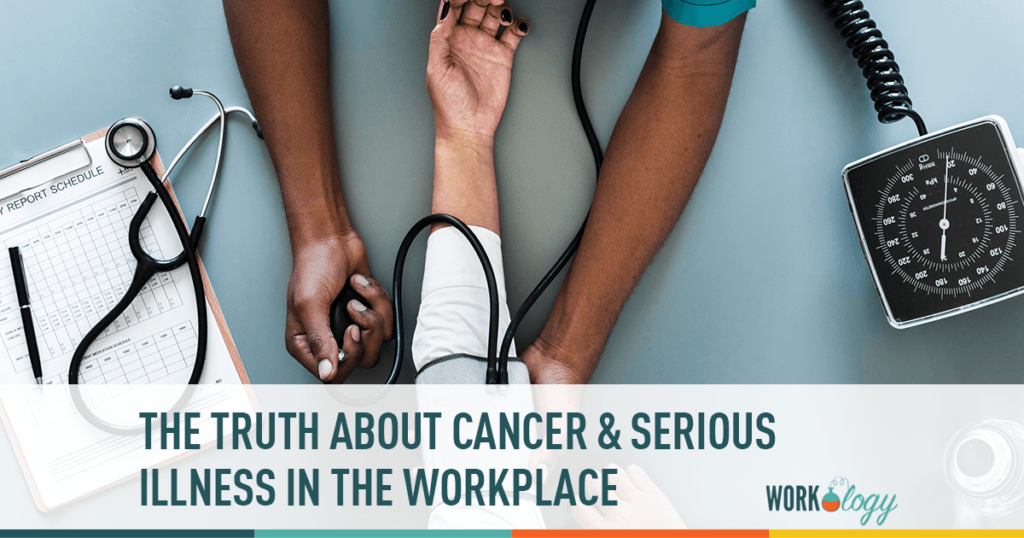Everybody knows someone – a family member or a friend – facing a serious illness, like cancer, Alzheimer’s or chronic heart disease. You know how difficult and time-consuming it is to be a caregiver for a loved one, whether it’s a parent, a friend or even your child. Perhaps you know about all of this because you’ve had a serious illness yourself and felt the impact on your work life.
I want to start out by giving you a rather alarming statistic. It comes from the American Cancer Society. It’s a bit dated, so it makes me wonder if some of the numbers are higher now: One in three women and one in two men will be diagnosed with cancer. In 2012, 13.7 million Americans had a history of cancer alone.
Serious Illness in the Workplace
What’s even more alarming than that is that probably most of these people go to work. So, are 40% of the people you work with experiencing cancer, or maybe another serious illness? If you were to add in the other diagnosable serious illnesses, e.g. heart disease, diabetes, kidney disease, auto-immune disorders, even mental illness – how many more might there be?
Why this emphasis on illness at work? Because it’s an absolute issue. It has a huge impact on everyone and everything … families, bosses, companies, culture, morale and even the overall bottom line.
This topic has become a passion and a mission for me. Through my own personal cancer journey, that of my son, and the loss of two brothers to cancer, I knew that in the work I do, I was compelled to bring this topic to light.
How It Impacts You
You, my readers, have most likely been impacted by the Big “C” as it’s called. Maybe yourself, maybe a loved one. Or, maybe someone you work with. The most important question is: “Are you comfortable or uncomfortable speaking with and supporting the employees who need you?” Do you know what to say, and what not to say? Can you help them navigate their illness (or that of a loved one) in addition to their everyday responsibilities in the workplace? Can you assist the leadership team in being more accepting and helpful to their top team that’s being impacted by this disease?
In a continuing series of articles, I hope to help you with this navigation process.
In this first article, I’ll make just a few vital comments.
The Serious Results of Serious Illness
Without some kind of planning or procedures in place, the risks to your business can be devastating
Your business loses money. According to the Centers for Disease Control (CDC), productivity losses related to personal and family health problems cost U.S. employers a minimum of $1,685 per employee per year. US workforce illness costs $576B annually from sick days to workers compensation (Integrated Benefits Institute, 2012).
Productivity declines. Productivity reductions are caused by worker disability, unplanned absences, reduced workplace effectiveness, increased accidents, workers’ compensation claims, and a decline in work quality and customer service.
Morale takes a nosedive. Often, managers or colleagues of sick employees simply don’t know how to help or what to say, which leads to or causes an uncomfortable workplace environment (And of course, there are the legalities of confidentiality and other HR concerns).
I hope this introduction is helpful. I will share much more in my upcoming blogs, which will be breaking down many of these issues, dealing with executive teams, overall culture, and more.









